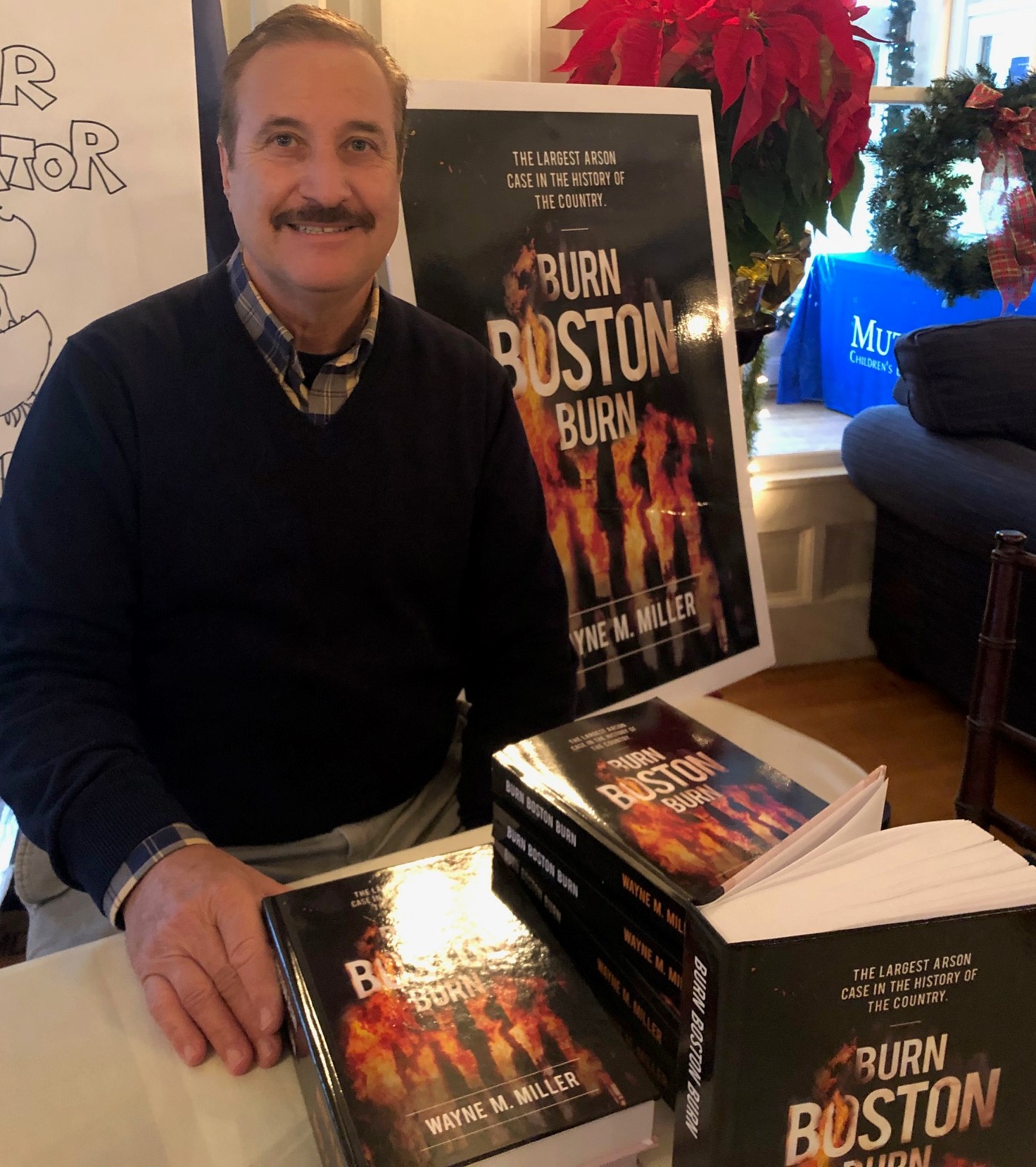He was there. Wayne Miller, Franklin resident since 1991, was a Special Agent in the Boston Division for the Bureau of Alcohol, Tobacco and Firearms’ recently-formed Arson Task Force when Boston began to burn in 1982.
“It’s a big part of Boston history, especially fire history, for a city that’s known its share of fires,” says Miller, author of a recently published book about the investigation, Burn Boston Burn.
It was February of 1982 when nine arsonists, including three Boston Police officers and a Boston firefighter among its gang, set the first of a series of 264 fires throughout the summer and into the fall of that year.
“Prop 2 ½ laid off 600 firefighters, who lost their positions in Boston, out of 1,700,” says Miller. The perpetrators figured that if they set enough fires, they could create a demand, and firefighters would get rehired.
“In any one month, they would set 30-40 fires,” says Miller. Most of the fires torched buildings in Boston proper, until the late summer and fall, when Miller says the group, “began branching out” to places like Canton, Norwood, Quincy, Chelsea, Everett, Fitchburg and Dedham.
“Our task force was formed in March of ’82, and they were setting up to seven fires a night,” says Miller, a Rhode Island native who was selected for the Boston ATF Division after studying criminal justice at Bryant University.
“I wanted federal law enforcement over local, because I wanted my boundaries to be much bigger,” he says. His early years were spent investigating illegal gun purchases, an effort that Miller found to be mostly undercover work or “paper chasing.”
“I wanted to do something more besides guns,” says Miller, and so, when ATF established a brand-new Arson Task Force in Boston, he volunteered.
“At any one fire, what I liked about it was you could interview a business owner or building owner, occupants, a cabbie who happened to be an eyewitness, insurance people. It was always a puzzle, putting together how it happened. Was it an accident, or was it intentional? Our focus was on intentional acts. It was always fun to work those cases.”
In a chronological way, in true crime fashion, Miller’s account is filled with facts from documents to which he had access as an investigator as well as information and insight he gained directly from interviews and court transcripts.
“I lived this story for three years, from March of ‘82 to March of ’85, when the last trial finished,” he says.
A crack in the case came on November 21, 1982 after a fire that was set at the Dedham/Hyde Park line.
“We were connecting the fires at this point, but didn’t have a good suspect,” says Miller.
It turns out that the men were fire buffs, including two as members of the Boston Sparks Association, which included “not just these guys but dozens and dozens waiting for calls to come in, who race to fires and take pictures. They like fire apparatus, like watching firefighter operations and the fire is pretty spectacular in and of itself,” says Miller. “These guys became friendly, because they were fire buffs, and they’d meet at the HoJos (Howard Johnson’s) in Boston, where they would hang out and wait to go to fire scenes.”
The arsonists figured their work would make things right, says Miller, but although no one died, over 200 firefighters battling the blazes sustained injuries, some as serious as broken backs and terrible burns.
Nat Whittemore, a WBZ cameraman, was filming the November 21st blaze at Gerrity Lumber. He caught a group of guys rooting for the fire on camera, and at one point, one of the arsonists, Boston Police officer Robert Groblewski, drew his handgun and waved it in the air.
Investigators interviewed Groblewski, noticing he had a stolen firebox in his home. “They were taking them, not just as souvenirs, but by taking them off the poles, people could not report the fires causing a delayed response,” says Miller. Groblewski did not admit to the crime at first, but was charged with receiving stolen property. Eventually, in January of 1984, he confessed and was subsequently wired 17 times.
The book lists many other details, including the incendiary device these arsonists used in the fires. Miller will be discussing these in several speaking engagements all over Massachusetts, and in a number of other states, including New Hampshire, Connecticut, Rhode Island, and even Georgia, Wisconsin, Illinois, Nevada and Arizona.
Locally, Miller will be speaking at the Mansfield Public Library on February 4th at 6:30 p.m., at the Franklin Public Library on February 8th, at 2 p.m., at the Wellesley Public Library on February 23rd at 2 p.m. and at the Franklin Country Club on February 27th, at 6 p.m.
Burn Boston Burn Author a Franklin Resident, Former ATF Special Agent

Issue Date:
February, 2020
Article Body:
